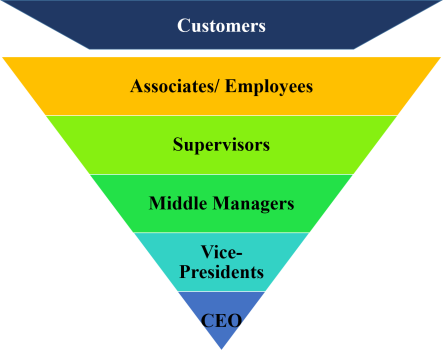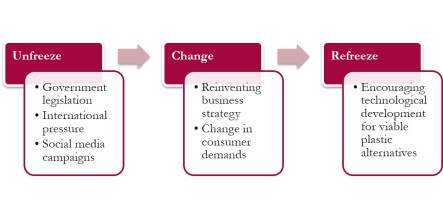
Servant leadership
The concept of ‘servant leadership’ emerged in the 1970s and has brought about an enormous shift in thinking. The impact was so large that according to James Hunter, author of ‘The Servant’ – when I did an Amazon.com search for servant leadership” in 1998, there were eight titles listed, the majority of those out of print. That number is now (in 2012) 4,600 and rising quickly.
When I began reading The Servant, most of the things that I read there were, for the lack of any other word, obvious. These were simple, common-sense tenets that we have been taught as sanskaars by Indian parents or as value education lessons in school. Indeed, the vagaries of personal and professional life create complex and twisted scenarios before us, but the basis of it all remains the same. These tenets may be simple to understand but are not simplistic when brought into action.
The key element of servant leadership is meeting the needs and not the wants of the followers. A need is a legitimate physical, emotional or spiritual requirement for the well-being of an individual or a group. A want, often a perceived need, is a desirable state of being and not necessarily a condition of well-being, without any regard to the consequences.
Hunter summarises this attribute in a very interesting way – The great one hug hard and spank hard.
This series of blog posts are the result of reflective journals writer for Moral Leadership in Organizations course conducted by Dr. Zubin Mulla for the students of HRM&LR at TISS, Mumbai. The articles may have a reference to some research papers prescribed as course material or read by me during the preparation of this course. Each of the referred material is duly cited and the reader can refer to the article mentioned in the bibliography (only at personal risk of becoming a better leader and perhaps, a better person).
Religious origins and interpretations of servant leadership
The inherent obvious nature of servant leadership and the article by Ganesathasan on moral development made me go back to the cultural and religious traditions across the world to find whether servant leadership has found expression in ancient works. I referred to a translated version of the Bhagvad Gita and opened the fifth chapter dealing with the Karma Sanyas Yoga (Sitanatha, 1987). I read the fifth verse and I could relate it to Vasista’s concept of Jivanmukta – one who is liberated while living and Aristotle’s eudaimon – one who lives the life of fulfilment.
यत्साङ्ख्यै: प्राप्यते स्थानं तद्योगैरपि गम्यते |
एकं साङ्ख्यं च योगं च य: पश्यति स पश्यति ||
The supreme state that is attained by means of karm sanyās is also attained by working in devotion. Hence, those who see karm sanyās and karm yog to be identical, truly see things as they are.
The Servant talks about the inversion of the management pyramid which represents a paradigm shift in management and leadership science. This new model of leadership is an inverted pyramid of the commonly accepted levels of leadership –

The relation between these concepts got me deeply intrigued in the further spiritual expression of servant leadership and I began to read different interpretations of the Gita. Sri Aurobindo’s essay ‘The Divine Worker’ explores the access to brahman and the dichotomy of action and inaction through the verses of the Gita. The terminology of ‘maha-nothing’ caught my attention while reading the article by Ganesathasan. It is remarkable to note how Rama who has access to all the knowledge to liberate himself is still a ‘maha-nothing’ because he is not able to apply the same through his actions. Sri Aurobindo also speaks of a similar notion of ‘akarma’, stating that ‘a mind that takes refuge in physical inactivity… has mistaken inertia for liberation (Ghosh, 1949).
According to me, the inherent contrast between action leading to liberation is depicted beautifully in many Hindu scriptures as with the metaphor of Purusha and Prakriti. The Purusha is the physical aspect of the action – the actions of a leader and the Prakriti is the benevolent nature of the leader, thus together forming the ‘servant-leader’
I moved on with my search to find elements of servant leadership in different religions. A simple Google search with two keywords ‘Jesus+servant’ revealed articles which extol upon the ‘servant’ nature of Jesus with specific references from the Bible (Roach, 2019).
“ For even the Son of Man did not come to be served, but to serve, and to give his life as a ransom for many.” – Mark 10:45”
During a class discussion, Prof. Mulla raised an intriguing question – If Jesus landed at CST station, how would he start preaching the precepts of Christianity?. Numerous answers emerged from the class on how he could deliver his sermons, where we saw the flaws in our answers the moment we started saying it out loud. Jesus began his way into the hearts of his followers by heeding to their needs and serving them. He addressed the needs of common people by reviving a dead son or turning water into wine. Only when we had served the people and their needs satiated, did he begin to preach and the common people turned into his followers.
The Buddhist text Shantideva, or the Path of the Bodhisattva notes that: “If I employ others for my own purposes, I myself shall experience servitude. But if I use myself for the sake of others, I shall experience only lordliness” (Cochrum, 2013).
The top ten qualities of a leader mentioned in The Servant are:
- Honest, trustworthy
- Good role model
- Caring
- Committed
- Good listener
- Held people accountable
- Treated people with respect
- Gave people encouragement
- Positive, enthusiastic attitude
- Appreciated people
These attributes are very close to the encompassing concepts of Confucian ethics, such as ren (humaneness), yi (appropriateness), li (ritual), zhong (conscientiousness), and shu (mutuality) (Cheng, 1991). These multi-cultural references have made me even curious about servant leadership. It is the irony of life that what is most obvious is often the most elusive. I am keen to explore further the aspects of servant leadership because I have realized that it is not only about being a ‘leader’ but also about living a complete human experience.
Ashrama system – A path of liberation
Vasistha describes three stages of development on the path of liberation – the fool, the seeker and the sage. Rama as an exceptional individual may have become a seeker at an early age in his life but the path of a simple human being may be long and arduous. We can draw parallels between these stages and the stages of development as described by Vasistha.
The Ashrama system of life divided the life into four phases – brahmacharyashram, grihastashram, vanprasthashram and sanyasashram. The brahmacharyashram phase is the learning phase during childhood, which is accorded supreme important by both Aristotle and Vasistha.
The grihastha is a ‘fool’ who indulges in all bodily and worldly pleasures and is driven by material desires. We can consider Aristotle’s idea here that any man indulging in ‘necessary pleasures’ is not immoral unless he pursues them in excess.
The ‘fool’ transforms into a ‘seeker’ during vanprashthashram. The movement towards the forest is a metaphor for detachment from the pleasures sought during the previous stage. This movement denotes that the pleasures were a part of the journey towards eudaimonia but are not ingrained in the character of the individual. The forest provides an ideal environment to abstain from worldly pleasures as prescribed by Vasistha.
The final stage of sanyasashram is akin to liberation or eudaimonia. According to Aristotle’s ideas, this stage of life will lend a certain maturity to the individual to be able to discern the ambiguous nature of ethics and morality with the application of the highest form of intellect. The habituation to the noble conduct is the very essence of sanyasashram and also a characteristic feature of liberation or eudaimonia.
Krishna – A servant leader
While I was reading the Hunter book, I was strongly reminded of a scene from the Mahabharata in the part with the discussion on desire and need.
Before the Kurukshetra war, Arjuna and Duryodhana both approach Krishna at the same time to seek his help for the war. Krishna gives a choice between his invincible Narayani Sena and himself. He allows Arjuna to claim first, who asks to have Krishna. Krishna agrees to participate with the Pandavas but only in the capacity of Arjuna’s charioteer. Duryodhana gets the invincible army, which he was hoping to get.
This one incident denotes how Krishna balanced between the needs of both the seekers who had approached him. We can also apply the Aristotelian theory of justice – Justice means giving people what they deserve. Arjuna had come to Krishna seeking his presence for the war and side with morality and justice. The Kauravas represent the evil and needed force to win the war. Perhaps, Krishna did not consider that the Kauravas deserved to have them on their side and had already anticipated that Arjuna would need his advice when the moment of truth arrived.
We can also notice how Krishna followed the inverted pyramid of management because he consented to be a charioteer. If we look at the contemporary sociology, charioteers belonged to the lower-caste. In fact, Karna was looked down upon and rejected by Draupadi during swayamvar because he was a charioteer’s son. Thus, Krishna had no qualms about the role that he played as long as the utilitarian objective of the victory of the good over the evil was achieved.
Bibliography
Beauchamp, T. L., & Childress, J. F. (1979). Chapter 8: Moral theories. In Principles of biomedical ethics: Oxford University Press.
Cheng, Z. (1991). New dimensions of Confucian and Neo-Confucian philosophy. Albany, N.Y.: State University of New York Press.
Cochrum, K. (2013). Servant leadership across distance and cultures. North Charleston, South Carolina: CreateSpace Independent Publishing Platform.
Ganesathasan, M. (2010). A matter of character: Vasistha and Aristotle on moral development. Asian Philosophy, 11(2), 103-123.
Ghosh, A. (1949). Essays on the Gita. Calcutta: Arya Publ. House.
Greenleaf, R. (1977). Servant leadership. New York, NY [u.a.]: Paulist Press.
Hunter, J. (2012). The servant. New York, NY: Crown Business.
Michael Sandel (2010). The lost art of democratic debate https://www.youtube.com/watch?v=hPsUXhXgWmI
Roach, D. (2019). Characteristics of Jesus as a Servant. Retrieved from http://likeateam.com/9-characteristics-of-jesus-as-a-servant/
Sitanatha. (1987). The Bhagvad Gita. New Delhi: Cosmo Publications.










